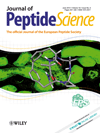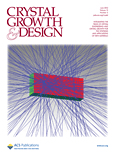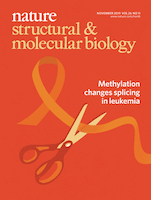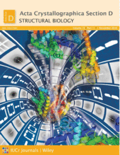
Crystallography Reviews
Scope & Guideline
Advancing the Frontiers of Crystallography
Introduction
Aims and Scopes
- Structural Biology and Biochemistry:
The journal emphasizes the interactions of crystallography with structural biology, particularly in understanding protein structures, including viral proteins such as those from SARS-CoV-2, and their implications for drug design. - Crystallization Techniques and Methodologies:
It covers new techniques in crystallization, including factors that influence crystallization outcomes and advanced methodologies for obtaining crystal structures, which are critical for materials science. - Material Science Applications:
The journal also highlights research related to materials science, focusing on the crystallography of organic compounds, polymorphism, and the study of materials under various conditions, including microgravity. - Educational Approaches in Crystallography:
There is a consistent focus on educational methods and resources for teaching crystallography, ensuring that the discipline continues to grow and adapt to new generations of scientists. - Historical and Biographical Perspectives:
The journal occasionally features historical insights and biographical accounts of significant figures in crystallography, providing context and inspiration for current and future research.
Trending and Emerging
- Impact of SARS-CoV-2 on Structural Biology:
A significant increase in research related to SARS-CoV-2 has emerged, including detailed studies on viral proteins and their structures, reflecting the pandemic's impact on scientific inquiry and urgency in drug discovery. - Application of Machine Learning in Crystallography:
There is a growing trend towards integrating machine learning techniques in crystallography, showcasing innovative applications that enhance data analysis and structural prediction. - Interdisciplinary Approaches in Crystallization:
Emerging themes include the exploration of crystallization across various disciplines, such as biology and materials science, indicating a broader application of crystallographic principles beyond traditional boundaries. - Smart Materials and Biomedical Applications:
The journal has increasingly focused on the development of smart materials, including hydrogels and their applications in biomedicine, highlighting the intersection of crystallography with materials science and healthcare.
Declining or Waning
- Traditional Crystallography Techniques:
There appears to be a waning interest in conventional crystallographic methods as more contemporary approaches, such as machine learning and artificial intelligence, gain traction in the field. - Basic Crystallography Education:
While educational resources remain important, the focus on introductory materials and fundamental concepts has decreased, possibly due to the increasing complexity and specialization of current research. - General Reviews on Inorganic Crystals:
The journal has shifted away from broad reviews on inorganic crystallography, as more specific topics, particularly those related to organic and biological crystallography, become more relevant.
Similar Journals

JOURNAL OF PEPTIDE SCIENCE
Advancing peptide knowledge for tomorrow's breakthroughs.JOURNAL OF PEPTIDE SCIENCE, published by Wiley, is a vital resource for researchers and professionals in the fields of biochemistry, drug discovery, and molecular biology. Established in 1995 and encompassing research through 2024, this journal provides a platform for disseminating cutting-edge studies related to peptide synthesis, structure, function, and applications in therapeutics. Although it currently does not offer open access, its robust content has earned it a respectable Q3 ranking in several categories, including biochemistry and pharmacology, according to the latest metrics. Researchers will find significant insights linked to peptide chemistry and its implications in medical sciences, making the JOURNAL OF PEPTIDE SCIENCE an essential addition to academic libraries and for those passionate about peptide research and its potential breakthroughs.

CRYSTAL GROWTH & DESIGN
Connecting Theory and Practice in Crystal DesignCRYSTAL GROWTH & DESIGN, published by the American Chemical Society, is a premier journal dedicated to the interdisciplinary study of materials science, condensed matter physics, and miscellaneous chemistry. With an ISSN of 1528-7483 and E-ISSN of 1528-7505, this journal provides a vital platform for the dissemination of innovative research findings from 2001 through 2024, reflecting the dynamic advancements in crystal growth and design methodologies. It is recognized for its impact in the field, earning a distinguished placement in the Q2 quartile across categories of Chemistry, Condensed Matter Physics, and Materials Science for 2023. Researchers engaging with CRYSTAL GROWTH & DESIGN will find a wealth of peer-reviewed articles encompassing cutting-edge experimental techniques, theoretical frameworks, and application-oriented studies. Although not an open-access journal, it remains a critical resource for academics, professionals, and students aiming to enhance their understanding of crystal growth processes and material functionality, with Scopus rankings reflecting its reputable authority within the scientific community.

NATURE STRUCTURAL & MOLECULAR BIOLOGY
Elevating Research, Transforming UnderstandingNATURE STRUCTURAL & MOLECULAR BIOLOGY is a leading journal published by NATURE PORTFOLIO, dedicated to advancing the field of molecular and structural biology since its inception in 1998. With an impressive impact factor that places it in the Q1 quartile across both the Molecular Biology and Structural Biology categories, this journal is pivotal for researchers and professionals seeking to publish innovative and high-impact results. Its Scopus ranking further highlights its elite status, with a remarkable 98th percentile for Structural Biology and 95th for Molecular Biology. While the journal does not currently offer open access, it continues to foster a rich discourse among scientists by providing a platform for the dissemination of groundbreaking research. Located in the United Kingdom and operated from Berlin, the journal's commitment to excellence positions it as an indispensable resource for students, researchers, and practitioners in the realms of biochemistry, genetics, and molecular biology.

Acta Crystallographica Section D-Structural Biology
Elevating the Science of Crystallography and BiologyActa Crystallographica Section D - Structural Biology is a premier academic journal published by the International Union of Crystallography, dedicated to advancing the field of structural biology. With an ISSN and E-ISSN of 2059-7983, this journal plays a crucial role in disseminating high-quality research, covering a wide spectrum of topics including crystallography, macromolecular structures, and their biological implications. Operating under a Q2 category ranking in the realm of structural biology, it highlights innovative and transformative studies that enhance our understanding of molecular architecture. The journal is notably indexed in Scopus, where it holds a rank of #28/49 in its category, placing it in the 43rd percentile. This robust positioning underscores its significance to the research community. With a reader base that includes leading scientists, professionals, and students in the biosciences, Acta Crystallographica Section D is integral for those looking to stay updated on cutting-edge discoveries in structural biology. The journal is available for readership and serves as a pivotal platform for researchers aiming to share their findings and contribute to the scientific dialogue.

International Journal of Microgravity Science and Application
Charting New Territories in Microgravity StudiesInternational Journal of Microgravity Science and Application is a pivotal academic publication dedicated to advancing the understanding and applications of microgravity phenomena across a plethora of scientific disciplines. Published by the Japan Society for Microgravity Application, this journal serves as a vital platform for researchers and practitioners aiming to explore the complexities and unique opportunities presented by microgravity environments. While primarily focused on the fields of materials science, fluid dynamics, and biological studies under microgravity conditions, the journal fosters interdisciplinary discussions and innovative research endeavors that can translate into real-world applications and technological advancements. Despite its non-open access model, the journal continues to be an invaluable resource for those engaged in space research and microgravity applications, thus contributing significantly to the scientific community's understanding of these essential topics.

CRYSTENGCOMM
Catalyzing collaboration in crystallization and materials science.CRYSTENGCOMM is a distinguished journal published by the Royal Society of Chemistry, dedicated to advancing the field of crystallization and crystal engineering. With its impact factor consistently among the top tier in its category, CRYSTENGCOMM serves as an essential platform for researchers, professionals, and students in Chemistry, Condensed Matter Physics, and Materials Science. The journal has successfully maintained its relevance and influence since its inception, showcasing pioneering research from 1999 to 2024, with a commendable Q2 ranking in the latest evaluations. This accessibility to crucial developments in crystallization facilitates knowledge transfer across disciplines and enhances collaboration within the scientific community. Although it operates under a subscription model, the journal remains committed to disseminating cutting-edge research and fostering innovation in the field. For more information or to submit your research, please visit the Royal Society of Chemistry's website.

IUCrJ
Pioneering Open Access in Crystallographic ResearchIUCrJ, published by the International Union of Crystallography, is a leading open-access journal dedicated to advancing knowledge in the fields of Biochemistry, Chemistry, Condensed Matter Physics, and Materials Science. Since its inception in 2014, IUCrJ has quickly established itself as a prestigious platform for high-quality research, achieving a remarkable record as a Q1 journal across its categories in 2023. With an increasing impact in the scientific community, evidenced by impressive Scopus rankings, IUCrJ offers unparalleled access to groundbreaking discoveries and methodologies that contribute to the understanding and application of crystallography in various disciplines. The journal’s commitment to open access ensures that research is readily available to a global audience, fostering collaboration and innovation in the scientific community. IUCrJ is an essential resource for researchers, professionals, and students aiming to stay at the forefront of crystallographic research and its interdisciplinary applications.

Acta Crystallographica Section E-Crystallographic Communications
Advancing crystallographic knowledge for a brighter scientific future.Acta Crystallographica Section E-Crystallographic Communications is a premier academic journal dedicated to the field of crystallography, published by the International Union of Crystallography. With an Open Access model established since 2008, this journal fosters the rapid dissemination of significant research findings in crystallographic studies, offering researchers and professionals the ability to freely share and access critical data. The journal is recognized for its contribution to various interdisciplinary categories, achieving notable standings in the 2023 rankings, categorized in the Q3 quartile in Chemistry (miscellaneous) and Materials Science, and the Q4 quartile in Condensed Matter Physics. By bridging the gap between theoretical and practical aspects, Acta Crystallographica Section E serves as a vital resource for those looking to deepen their understanding of crystallographic phenomena and its applications in science and engineering. The journal maintains its commitment to quality and innovation in research, ensuring a vibrant platform for scholarly communication within the scientific community.

JOURNAL OF CRYSTAL GROWTH
Building Foundations for Future Crystallization TechniquesJOURNAL OF CRYSTAL GROWTH, published by Elsevier, stands as a vital platform in the realm of condensed matter physics, inorganic chemistry, and materials chemistry. With its inception dating back to 1967 and a promising convergence continuing through 2024, this journal encompasses the latest research and advancements in crystal growth phenomena. Although it does not currently offer open access options, its rigorous peer-review process ensures high-quality scholarly contributions that are essential for researchers, professionals, and students alike. The journal's solid standing is reflected in its Scopus rankings, with placements in the third and second quartiles across relevant fields and notable percentiles. Operating from the heart of the Netherlands, JOURNAL OF CRYSTAL GROWTH not only fosters academic dialogue but also enhances the understanding of crystallization processes crucial for materials engineering and applied sciences, making it an indispensable resource for anyone dedicated to exploring the intricacies of crystal growth.

STRUCTURE
Connecting research and innovation in structural biology.STRUCTURE is a premier academic journal published by CELL PRESS, dedicated to advancing the field of structural biology and molecular biology since its inception in 1993. With an impressive reputation, it is recognized as a Q1 journal in both Molecular Biology and Structural Biology categories, reflecting its high impact within the academic community. The journal holds a significant position in Scopus rankings, placing 10th among 49 in Structural Biology and 100th among 410 in Molecular Biology, marking it as a key resource with a strong influence on ongoing research. Researchers and professionals alike will find STRUCTURE an invaluable platform for disseminating cutting-edge findings related to protein structure, dynamics, and interactions, fostering insights that can lead to groundbreaking applications in medicine and biotechnology. Although the journal follows a traditional subscription model, it continues to attract a diverse array of submissions, ensuring a vibrant exchange of knowledge in the ever-evolving landscape of structural and molecular biology. Access to its content can enhance the understanding of intricate biological mechanisms, making it essential reading for experts, students, and anyone passionate about the molecular underpinnings of life.